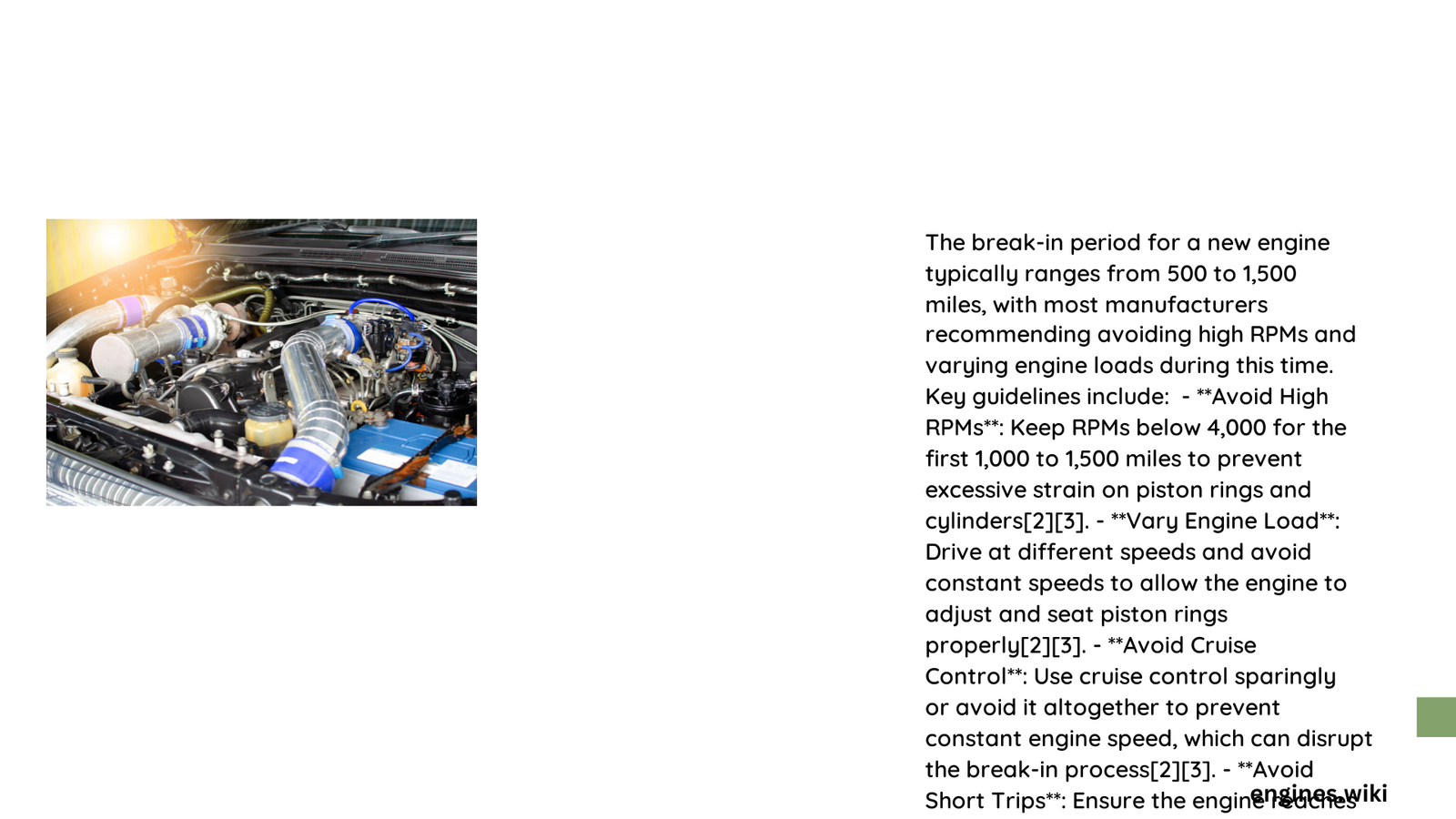Breaking in a new engine is a crucial process that determines the long-term performance and durability of your vehicle’s powertrain. During the initial miles, careful driving techniques and specific maintenance practices help seat piston rings, reduce friction, and establish optimal component interactions. This delicate period requires precise attention to RPM limits, load conditions, and gradual mechanical conditioning to ensure your engine achieves maximum efficiency and longevity.
What is the Break-In Period for a New Engine?
The break-in period typically spans the first 1,000 to 1,500 miles of a new engine’s life. During this critical phase, engine components undergo initial wear and adaptation, requiring careful management of driving conditions and performance parameters.
Key Break-In Considerations
| Engine Type | RPM Limit | Recommended Mileage | Load Conditions |
|---|---|---|---|
| Gasoline | Below 4,000 RPM | 1,000 miles | Moderate, varied loads |
| Diesel | Below 3,500 RPM | 1,000-1,500 miles | Gentle acceleration |
| Marine | Incremental RPM increase | First 10 hours | Limited heavy loads |
How to Properly Break In an Engine?

Driving Techniques for Optimal Engine Conditioning
- Gentle Acceleration
- Avoid full-throttle acceleration
- Work through gears quickly
-
Maintain moderate engine speeds
-
RPM Management
- Keep RPMs between 25-35% of maximum
- Vary engine speeds periodically
- Avoid sustained high-speed driving
Oil and Maintenance Strategies
First Oil Change Recommendations
- Change oil after initial 1,000 miles
- Use manufacturer-recommended oil
- Monitor oil condition closely
- Remove potential metal debris and contaminants
What Mistakes Should You Avoid During Break-In?
Critical Break-In Pitfalls to Prevent
- Excessive High-RPM Operation
- Causes premature component wear
- Prevents proper ring seating
-
Increases internal engine stress
-
Inconsistent Driving Patterns
- Avoid constant low or high speeds
- Mix driving conditions
- Allow thermal cycling of engine components
Technical Insights for Effective Engine Break-In
Piston Ring Seating Mechanisms
Proper break-in facilitates critical piston ring sealing through:
– Controlled thermal expansion
– Gradual mechanical wear
– Precise cylinder wall adaptation
Performance Optimization Techniques
- Apply brief periods of moderate load
- Use part-throttle driving
- Implement gradual speed variations
- Monitor engine temperature
Expert Recommendations
Professional mechanics consistently emphasize:
– Follow manufacturer guidelines precisely
– Use high-quality lubricants
– Avoid aggressive driving
– Perform regular maintenance checks
Conclusion
Breaking in a new engine requires patience, precision, and understanding of mechanical principles. By following these guidelines, you’ll ensure your engine achieves optimal performance, reduced wear, and extended longevity.
